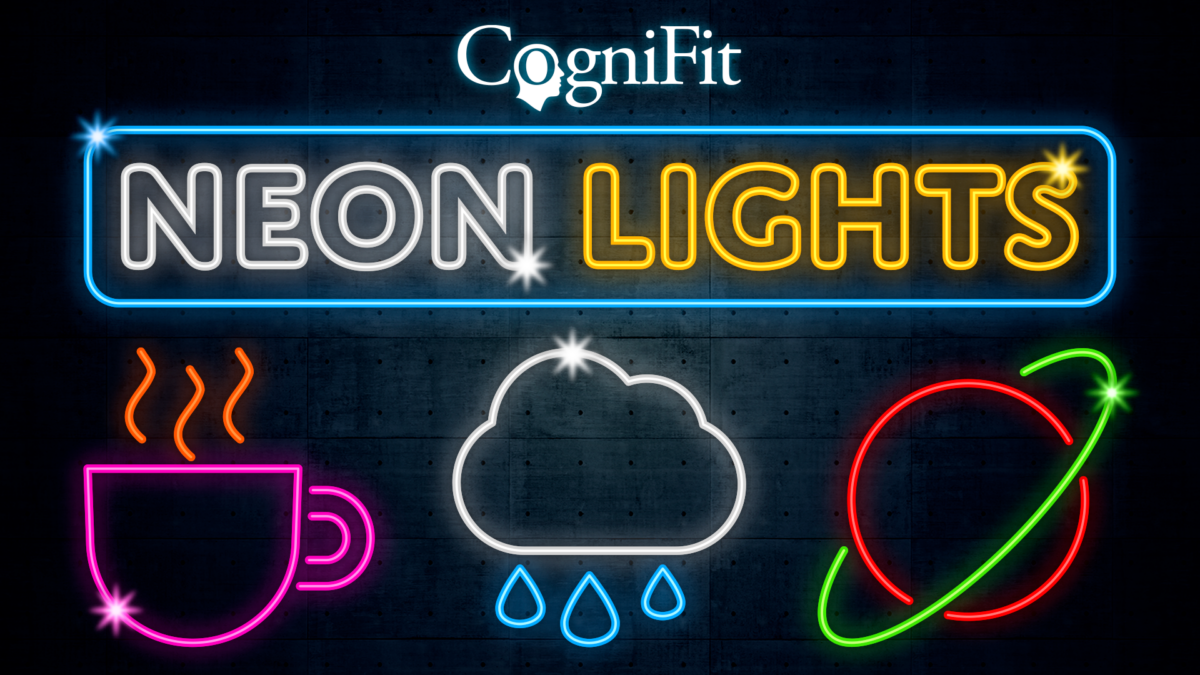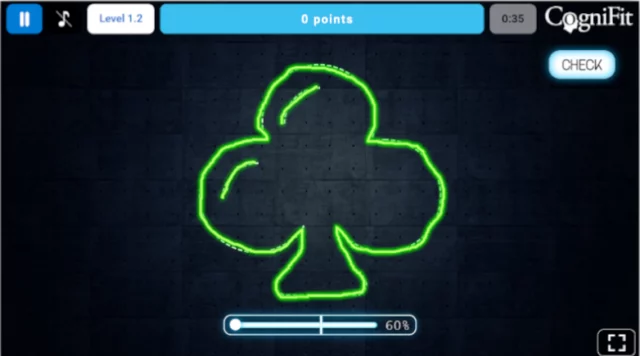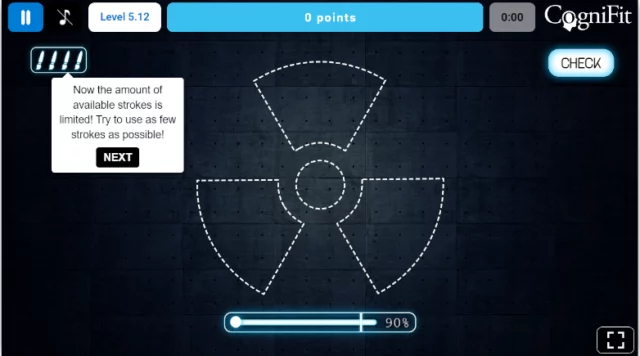
Neon Lights Game – Tricky Tracing for Coordination
Play this exciting CogniFit brain flexer – the Neon Lights Game!
This colorful addition might seem like a breeze, but once you start moving your mouse, you’ll see just how many skills you’ll need to muster. This includes Hand-eye Coordination, Processing Speed, Spatial Perception, and Visual Short-Term Memory.
Let’s take a closer look at this game as well as how it related to each brain function.
How To Play Neon Lights Game
Starting on the easiest levels, all you need to do is move your mouse along the dotted line of the image. And to anyone who’s ever tried to draw a picture with a mouse, you’ll know it’s quite the challenge! Join our Planet Fitness Brian Gym.
A bright neon light will be left in the cursor’s wake, and when you’re finished, click “CHECK” and the program will tell you how accurate your tracing was. In order to move on to the next level, you’ll need to be higher than the percentage bar at the bottom of the screen.
But…
On harder levels, there are a few twists to really push your brain. First, you’ll only have a limited number of strokes. This means you’ll have to keep your mouse going for as long as possible while maintaining precision.
Second, after some time, the dotted lines will fade away. Leaving you blind – with only your memory to rely on. Either that, or you’ll have to trace as fast as you can without sacrificing accuracy.
And that’s the Neon Lights game in a nutshell.
But what about the four brain functions that this game exercises? Let’s look at them now…

Hand-Eye Coordination
This complex cognitive ability is exactly what it sounds like. It’s our ability to take the information that we get through our eyes and then use it with our hands. It’s something we use every single day.
It can be something as simple as eating – reaching our spoon into a bowl of soup and then into our mouth. Or it can be difficult tasks like driving – seeing all the cars around us and then moving into another lane.
Interesting Fact: Hand-eye coordination can be poor even if someone’s eyes are perfect.
As for the Neon Lights game, you have to use your eyes to gather the information on the monitor. Then, use your hands to move the mouse along the dotted line as accurately as possible to complete each level.
Processing Speed
This is one of our main cognitive functions. It’s also really important for learning or any kind of academic performance, intellectual development, reasoning, and experience.
It’s the time it takes someone to do a mental task. Or to understand and then react to something. The thing is it doesn’t relate to someone’s intelligence. Someone with poor processing speed might be highly intelligent, but they would just take a bit longer in certain tasks. It’s really all about efficiency.
In Neon Lights, especially on harder levels, you’ll have to react quickly to complete each level before the dotted lines disappear.

Spatial Perception
Spatial perception isn’t a brain function people usually think about. However, it’s a very important one. It’s made up of two processes:
- Exteroceptive: which creates representations about our space through feelings
- Interoceptive: which creates representations about our body, like its position or orientation.
As you can see, it’s not just the “space” around us, but also our thoughts and feelings; our thinking. Without it, we wouldn’t be able to understand vital things like 3-dimensional space (even 2-dimensional).
A simple example would be having to get yourself to a new place. We either use directions like north or south. But location points or landmarks count too.
In the game, even if it is 2D, still works spatial perception.
Visual Short-Term Memory
Lots of people worry that their short-term memory is poor. But did you know that it’s limited for everyone?
That’s right! No matter how much you work it, there will always be a “cap” on how good it is. That being said, most of us could do with exercising this mental function a little bit.
VSTM takes information we receive and stores it for a short period of time. It’s part of our Short-Term memory and also used by our Working Memory. After a certain amount of time, the information either goes into Long-term memory, or it’s forgotten.
Things like Alzheimer’s, dyslexia, stroke, or brain trauma can affect this brain function.
When you get to higher levels of Neon Lights, the dotted lines won’t stay around forever. You’ll have to use your memory to finish tracing in the lines if you can’t finish the drawing before then.
Neon Light Game Conclusion
This simple game packs quite a punch when it comes to brain exercise. It’s also something very different compared to many of the other brain games. So, you might want to add it to your weekly collection for a bit of variety.
And remember, all you need is 3 sessions a week and 20 minutes a session to start seeing a difference!












